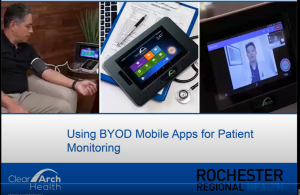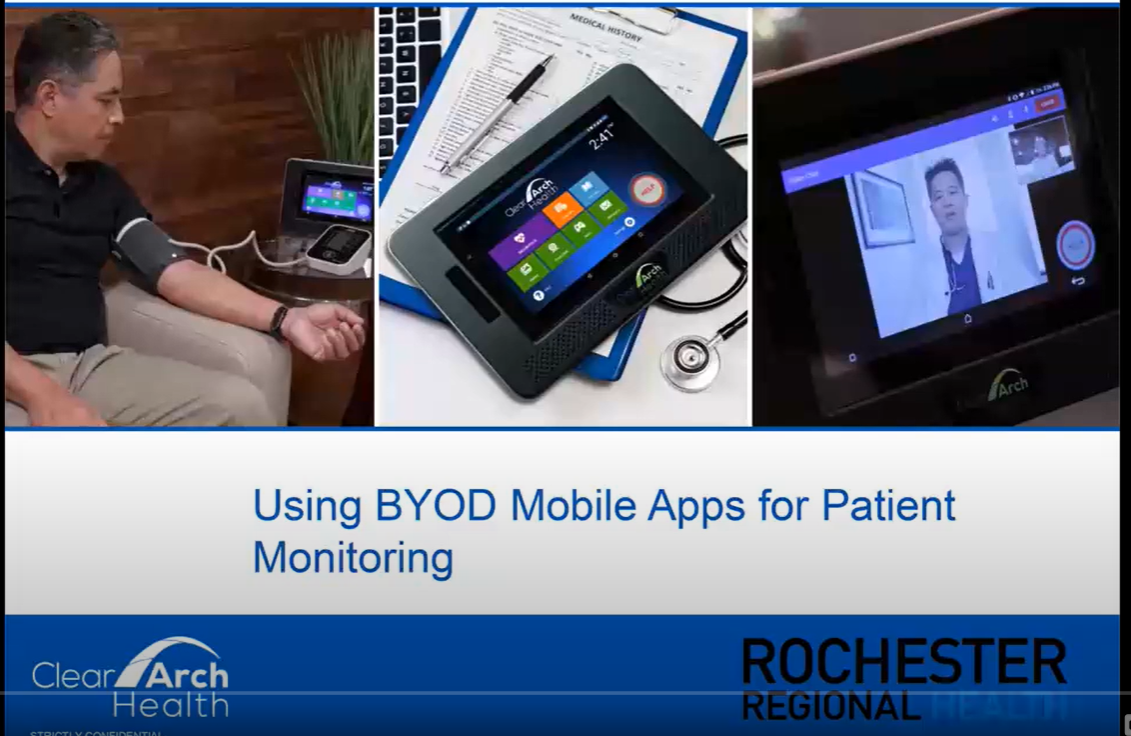
To deliver successful remote patient monitoring programs, Clear Arch Health provides options to our client partners. These options are both valuable and flexible, fitting our client partners’ specific program and population needs. In addition to offering exceptional hardware, clinical monitoring software, and a patient portal – Clear Arch Health also provides logistics, contact center services, integration and now – data analytics.
With a continued focus to improve patient-centric care and balancing organizational goals to reduce care costs, Clear Arch Health continues to expand services.
Through our partnership with Versatile MED, our clients can receive expert support in identifying and prioritizing their unique opportunities, selecting the appropriate patient population and identifying critical data points necessary for tracking ROI and outcomes. By way of this blog, please meet our partner, Versatile MED.
This is what your data would say to you if it could talk.
Data has been itching to tell us all a story, but it’s only been within the last five years that it has been able to through better data capture, integration, and meaningful analysis. If you work with even the tiniest sliver of the 2.5 million terabytes of data that is generated daily, you can glean valuable information about your organization.
Here are five simple ways you can start listening to your data now.
1. Pay attention — but not too much attention — to those pesky outliers.
Outliers are those rogue data points that make us raise an eyebrow when we see them. Outliers may crop up when something has changed, but it has to be significant enough to cause your little outlier friend to be a noticeable distance from the other data points. They weren’t invited to the party, so why are they here?
Well, they could have something critical to point out or they could just be normal noise (or “variation”), so think hard before acting. The spotting of an outlier doesn’t automatically mean something is wrong, so don’t go chasing every single one. You should take those outliers with a grain of salt until you’ve looked at them through a thorough analysis lens and meaningful process to classify their significance. However, if you see multiple outliers in a row, it may be a good indication that your something is different from past behavior. This could be good, bad or indifferent, but it’s your job to understand the “why.”
2. Compare current to historical trends.
Looking for trends in the data implies you’ve already done your due diligence by validating your data. Data validation is extensive enough to require its own blog post and is not for the faint of heart. If you haven’t done this yet, you should stop reading this post and validate first. While we’ve briefly mentioned data validation, the idea of data analytics is something companies should look into, no matter what industry you find yourself in. This will help you identify useful data that you can use to your advantage and help improve your business.
But if you have, let’s discuss data patterns (or rhythms) that exhibit a consistent behavior — which includes consistently inconsistent. Sometimes your data can demonstrate a steady rhythm with occasional outliers. Upon further examination, you might find these “outliers” actually reflect cyclical, seasonal, or other common cause changes. Mark Graban offers key guidelines for identifying outliers and when to be concerned about them in his book, Measures of Success. And remember, two datapoints do not constitute a trend.
A good example of an outlier that we’ve been asked to look into is a health plan having a dramatic spike in Inpatient admits/k and spend one month. Upon examining the last 3 years of Inpatient data, we may find that this month’s “outlier” value is within normal variation limits, but appears in this month to be anomalous because the initial run chart that showed the outlier only spanned one year’s time and it happened to be an early flu season — and a particularly bad one!
3. Consult the humans.
In our world of expanding data technologies, talks of machine learning and artificial intelligence (AI) seem to permeate every conversation. Though these topics are legitimate game changers, some folks may be at risk of losing sight on the business intelligence that is crucial to making data meaningful and actionable. In short: we still need humans! Even the most sophisticated algorithm will never be as powerful as it is when coupled with a human element that understands the domain. The human element is what drives the questions being asked of the data and what leads to other sources that will shed more understanding.
Our favorite example is when a data scientist unfamiliar with healthcare baked oxygen use and chronic obstructive pulmonary disease (COPD) into their model, then later exclaimed that the greater the occurrence of COPD among patients, the greater the utilization of oxygen. Understanding your domain data and what influences it is critical to knowing what you should include, exclude, or combine in your report out.
4. Use data to design your strategy.
Data should play a critical role in your strategy. The most harmful thing you can do with data is not use it. Data tells us a story, but simply hearing that story isn’t enough. As consumers of data, we own the responsibility of listening to it and putting the insights into action. Whether an inefficiency or opportunity has presented itself, it’s up to us to create policies, procedures, processes, and targeted initiatives. Reliable, actionable data must be placed in the hands of leadership and teams alike so these insights aren’t left to fade into the abyss.
5. Monitor, monitor, monitor.
The laws of nature cause many new initiatives to revert back to where they started if they are not routinely monitored, shared, discussed, and improved upon. This is one of the barriers to long-term adoption and often leads to your data story ending right where it began. Organizations get stuck in a vicious cycle of hearing their data’s story, taking some action based on that story, but then failing to invest time and resources on continued commitment. This often leads to a recurrence of the issue that your data pointed out in the first place. Identify, track, trend, monitor, repeat.
Data gives us meaningful insights and invaluable information, but only when we’re willing to take the time to listen to the story and commit to its long-term use. This is much easier said than done, and organizations of all sizes continue to struggle with it for many reasons.
Data technologies and capabilities continue to grow at breakneck speed.
If you want to reap the rewards that your data has to offer, you’ll first need to learn how to listen to what it has to say.

Published by: Angelica Bruhnke
Angelica Bruhnke writes about healthcare analytics, leadership, and entrepreneurial pursuits. She is passionate about actionable data, helping the underserved, and community impact. She is Executive Officer at Versatile MED Analytics, a healthcare analytics and data solutions company headquartered in Albuquerque, NM. To learn more, visit versatilemed.com. Visit their blog and this blog post here.








